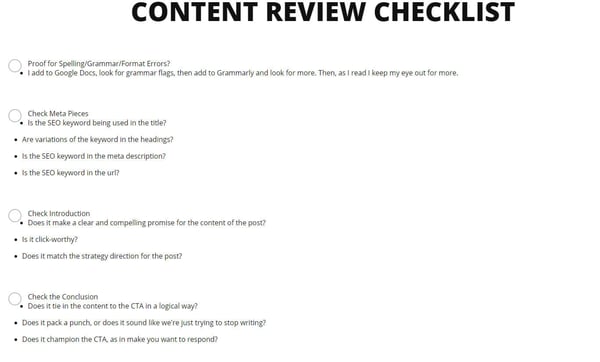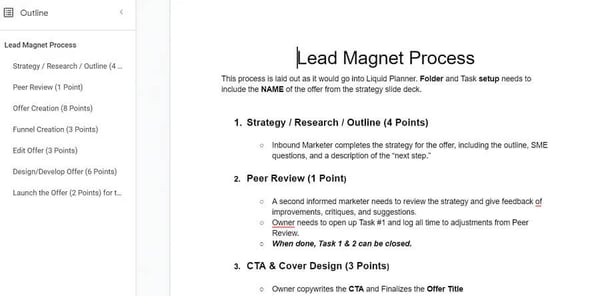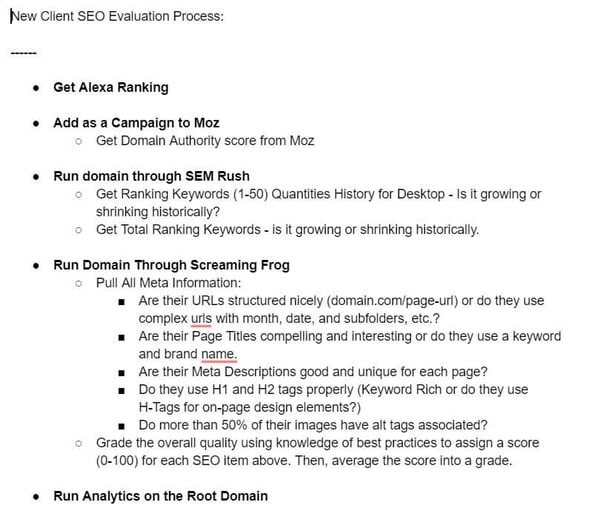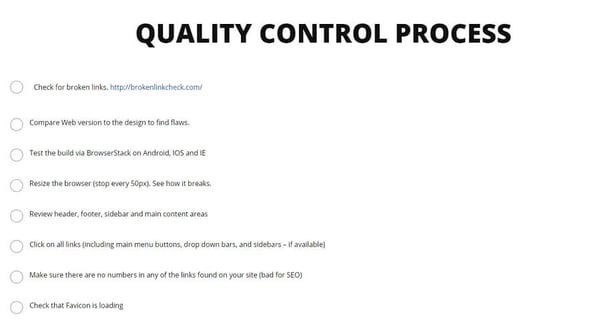The Stryker is an armored personnel carrier used by the US Army. It fits nine passengers with two crew members and is cable of maneuvering even if four of its eight wheels are blown off. The vehicle before me was a 16-ton paperweight. During a routine convoy to a training site, this specific Stryker had a catastrophic malfunction, losing all power. And to make it worse, we were a few hours outside Fairbanks, Alaska...in January. You'll likely never be in this situation with your marketing team. If you are, you're doing it wrong. But you may find yourself in situations you should have foreseen, and if you can establish SOPs now, you'll be able to tackle them with ease.
VIDEO TRAINING
Get The Growth Marketing Playbook.
Learn to plan, budget, and accelerate growth with our exclusive video series. You’ll discover:
- The 5 phases of profitable growth
- 12 core assets all high-growth companies have
- Difference between mediocre marketing and meteoric campaigns
Thanks for submitting the form!
We'll review the information you've submitted and respond to you just as soon as possible.
5 Examples of Marketing SOPs to Increase Your Productivity
A Standard Operating Procedure (SOP) is one of the most useful documents your business can create. An SOP outlines the step-by-step process to handle specific tasks within your organization. You can have an SOP for how to manage meetings, or conduct payroll activities. You can even have one for how to tow a downed combat vehicle off a deserted highway.
With a -70° temp motivating us, we worked as fast as we could to recover the vehicle by using another to tow it away. The only problem was that at -70°, water had frozen the bolts restraining the tow bars.
We had a five million dollar vehicle and eleven soldiers that were stranded, with the nearest civilization hours away.
Though we'd rehearsed and knew exactly what to do for a vehicle break down, our team was new to the Stryker platform and no one had accounted for the effects of the cold. Had we built the right SOPs, we'd have been already on the road, not losing feeling in our hands and feet.
In the marketing world, SOPs are essential for keeping your team productive and on the right track. It gives everyone an understanding of a project's current status, just by knowing what stage it's at. SOPs make it easier to onboard new team members and to pass off tasks midway through production if required.
Most importantly, marketing SOPs ensure everything leaving the company is delivered at the standard your customers expect.
So, when it comes to developing your own SOPs, there are six steps you should follow if you want comprehensive plans. And if you put effort into the process, they'll give back ten-fold to what you put in.
Developing Your Own SOP
1. Identify the problem you need to solve.
Every company has problems, and the first step requires you identifying them so you know where to focus your efforts.
Now, problems don't have to be negative in nature. While you can have SOPs for what to do when a page breaks, they'll be more used with tasks like creating a blog post or developing an email workflow. The problem could be publishing content faster or ensuring they're packed with value.
With that list, you'll then need to look at the "5 W's."
- What's the problem and/or the desired outcome?
- Why does this need an SOP?
- Who's responsible?
- Where is this actioned?
- When does it need to take effect?
So, as an example, let's say we're creating an SOP for our blog content:
- What: Creating blog posts that are effective in less time.
- Why: Content has been missing deadlines when ensuring it has enough value to publish.
- Who: All content creators.
- Where: Monday.com and HubSpot's CMS
- When: Prior to the next campaign's initiation.
While this is a simple example, it's also one that almost any business can relate to. The most important piece of this step is understanding why you need the problem solved. If you can understand the 'why,' the next step will be significantly easier.
2. Brainstorm the ways to solve it.
Here's where the process gets fun. You get to brainstorm every possible way to solve your problem. Nothing should be left on the table.
To make this step more effective, enlist help from your entire team. Each individual has different experiences that lend to varying inputs. One of your content writers may see things from one perspective, while those who edit or strategize see it from a completely different one.
The only limiting factor in the brainstorming process should be the parameters you're bound by. With our example above, you can only start writing content after the client has approved the strategy and it needs to be completed prior to the end of the campaign. Any recommendations that fall outside those parameters doesn't benefit your goal.
Keep a copy of any ideas you don't use, you may need them later.
3. Codify your plan in a comprehensive document.
Once you have your ideas brainstormed, you get to decide on a course of action and codify it. This can be cumbersome, but this is the step that lets your SOP take shape.
The document should be as detailed as necessary to cover the problem and solution. It can include steps, a checklist, images, or anything else that gets the message across. Too much information makes the SOP difficult to digest. Too little information makes it confusing and useless.
The goal of this stage is for anyone, at any level of experience, to pick it up and understand completely what's expected for the covered task. They should know their role and the roles of others based on the document's guidance, and that alone. There won't always be someone around who can explain the process, so it's paramount that everything is packaged within your SOP.
4. Distribute to your team.
Once complete, it's time for your team to review it. It's critical that you ensure everyone understands the process. If one person is confused by something, there's a chance a future hire has the same concerns. It's also important because this guarantees everyone is aware of the SOP. If not everyone reads it, it fails to be the standard.
If everyone is satisfied with and understands the content, the document should be distributed and published to a shared location where anyone can find it. It's also a good idea to create an onboarding folder where all your SOPs are pre-packaged for new hires to access.
5. Analyze and adjust as necessary.
Once you execute the SOP, take notes of how it worked. There's always a chance that the plan doesn't work as well as you'd hoped, or that there's a better way of doing it.
This is one of the reasons why you want to save your brainstorming ideas. If one of the options led to the entire process failing, you can select a different approach for your next iteration.
The process should follow what's known as the OODA Loop. This acronym organizes the manner for addressing a problem. It stands for Observe, Orient, Decide, Act. You observe how the SOP is working. You orient towards the problem so you can decide how to address it. Then you act on your new SOP.
The OODA Loop is a never-ending cycle that will continue honing your SOPs.
SOP Examples to Inspire Your Own
Finding templates for SOPs online isn't difficult. Finding actual SOPs companies are using, well that's a different story.
So, to help, we've pulled some different SOPs that help our teams at Lean Labs achieve 10x results for our clients. They may not fit your company's organizational needs, but they're a good starting point for the SOP creation process.
1. Blog Post Creation
Using Google Docs, we created a file that explains our entire blog post creation process. Below, you can see the table of content which makes scrolling through the document faster with Docs' Outline tool.
Within the document, we dive into the steps required for each task, complete with links and providing any information so it makes sense no matter who reads it.
2. Content Review Checklist
Our content review checklist was built on our website on a locked page. Our team members are given the password to access this page whenever they need it for a different file. The bubbles are clickable, so you can mark each task as complete as you work through your content.
3. Lead Magnet Process
Lead magnets follow a similar SOP setup as our blog post creation, but here, we've listed the points associated with each task as well. Since this is the metric we use to assign costs for our clients and judge our personal efficiency, it gives team members an idea of how long they can expect to work on each task.
4. New Client SEO Evaluation
Again, this SOP was created in Google Docs, but this time, only to include bullet points of exactly what to do. An SEO evaluation requires a lot of steps and not necessarily a lot of creative thinking, so structuring it in this way let's readers focus on the specific details of what to do.
5. Website Quality Control Process
We made this SOP on our site as well. It provides links and information for what needs to be accomplished, but allows us to check the bullets as we work down the page.
Creating Your Own Marketing SOPs
Had my unit followed a process for creating SOPs, we wouldn't have had to fight for warm space in the back of our working Strykers. We would have acknowledged the weather as one of the external factors we had to work around, and the entire situation could have been avoided.
If you're looking for formatting help with your own SOPs, Process.st has a lot of templates you can use. And while it's essential to have your SOPs presented in a manner that's easy to read and understand, it's more important that you create them. Don't get hung up on their style. Even a short checklist in Google Docs can be effective for increasing your team's productivity.
Spend the majority of your time capturing the critical information, building it into a plan, and getting buy-in from your team. If you can do that, you may be surprised at what your team is capable of.


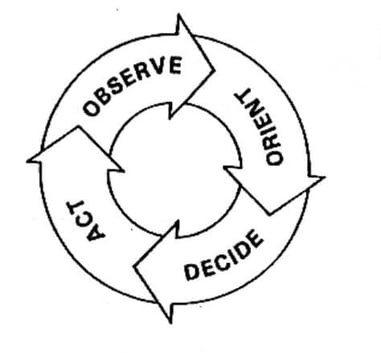
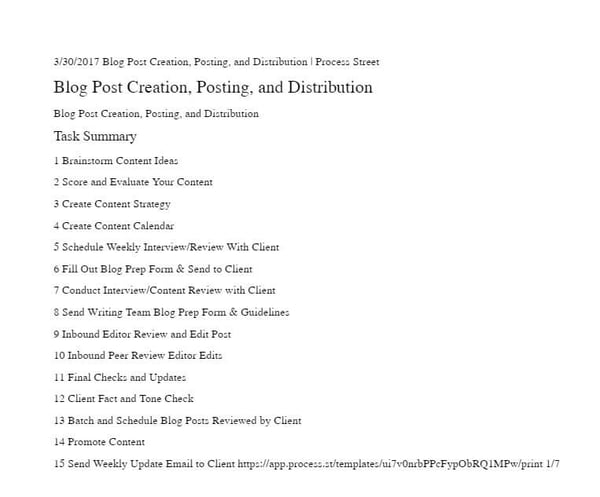
.jpg?width=600&height=489&name=Marketing-SOPs-Blog-Post-Creatio-(1).jpg)
